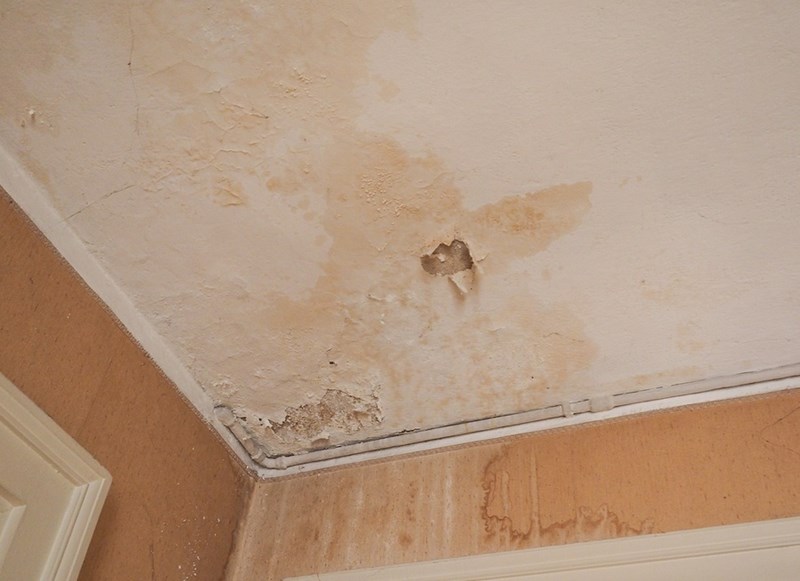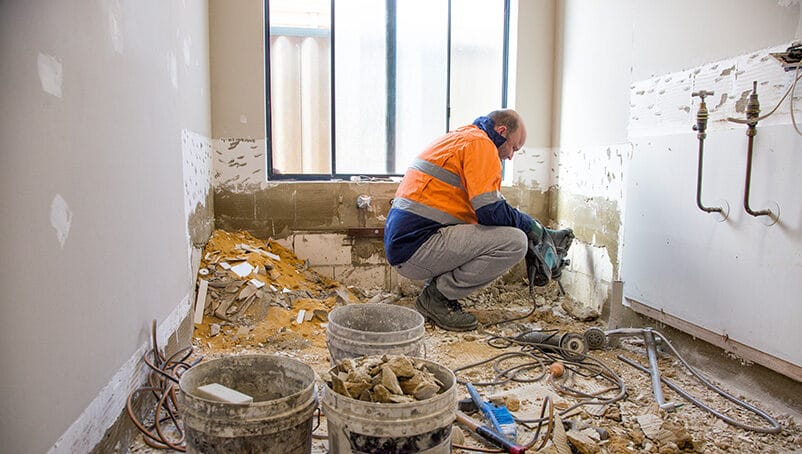24/7 Emergency Water Damage Restoration Services for Urgent Needs
Wiki Article
The Refine of Water Damage Clean-up: Guaranteeing Your Home Is Recovered Efficiently
Water damages can be a difficult obstacle for homeowners, demanding a thorough and structured cleaning procedure to recover safety and performance. Originally, an extensive evaluation is crucial to recognize the extent of the damage and figure out the proper removal steps. Following this, effective water extraction techniques play a pivotal duty in minimizing additional injury. The subtleties of drying out, sanitizing, and eventual remediation are equally important and frequently neglected. Recognizing these stages can make a substantial difference in the outcome of your home's restoration, prompting a closer appearance at what each action involves.Examining the Damage
Upon uncovering water damage, the initial step is to completely evaluate the level of the effect. This first analysis is vital, as it assists establish the needed steps for reliable cleaning and remediation. Begin by inspecting the impacted locations, consisting of walls, ceilings, floorings, and personal items, to determine the resource of the water intrusion, whether from flooding, leaks, or condensation.Recording the damages is vital for both insurance claims and intending repair initiatives - damage restoration services. Use pictures and created notes to catch the intensity of the damages, noting any afflicted architectural elements and products. Pay special attention to locations that might not be right away visible, such as behind wall surfaces and under carpetings, as concealed moisture can cause further problems, consisting of mold and mildew development
Additionally, analyze the timeline of the water direct exposure. The longer the products remain wet, the greater the capacity for damage. Recognizing the duration of direct exposure will inform the urgency of removal initiatives. Inevitably, a detailed analysis prepares for an effective water damage clean-up process, making certain that all influenced locations are dealt with efficiently and thoroughly.
Water Removal Strategies

Experts generally utilize submersible pumps for bigger volumes of water, which can quickly alleviate flooding in basements or other influenced areas. For smaller amounts, wet/dry vacuums are typically used to remove residual dampness from rugs and hard surface areas. In addition, using mobile extractors permits targeted elimination in restricted spaces or locations with delicate products.
In instances of infected water, such as sewage or floodwater, advanced extraction strategies may entail making use of biohazard devices to guarantee safety and security and compliance with wellness policies. High-powered removal devices are vital in reducing water retention in architectural materials, which can result in mold and mildew development and structural damage if not resolved promptly.
Eventually, the efficiency of water removal techniques plays a crucial role in the general success of the water damages cleaning process, preparing for succeeding restoration efforts.
Drying and Dehumidification
As soon as standing water has actually been efficiently removed, the following crucial phase in the water damages clean-up procedure is drying out and dehumidification. This step is necessary to protect against additional damages and mold and mildew development, which can occur within 24 to 48 hours in wet environments.To accomplish effective drying, specialized equipment such as industrial-grade air moving companies and dehumidifiers is utilized. Air movers flow air throughout damp surfaces, boosting evaporation rates, while dehumidifiers minimize moisture degrees in the air, advertising a helpful environment for drying out. The combination of these devices guarantees that dampness is attracted out from wall surfaces, floorings, and furnishings, permitting them to dry thoroughly.
It is necessary to keep track of the drying process carefully. Professionals typically utilize wetness meters to analyze the dampness web content in different materials, guaranteeing that all affected areas reach appropriate dry skin levels. This meticulous approach aids to stop surprise dampness pockets that might lead to architectural damages or undesirable mold growth.

Cleansing and Sterilizing
After the drying out and dehumidification phase is total, the next essential action in water damage clean-up is cleaning and sterilizing the influenced locations. This process is essential to avoid the growth of mold and mildew, microorganisms, and various other microorganisms that prosper in damp settings.The cleaning phase usually includes eliminating any debris, dust, and pollutants from surface areas utilizing specialized cleansing agents. For difficult surface areas, a combination of soap and water or business cleaning products is usually employed. Soft materials, such as furniture and carpetings, might call for extra considerable cleansing approaches, including vapor cleansing or deep removal methods, to ensure complete cleanliness.

Disinfecting complies with cleansing, making use of EPA-approved anti-bacterials to eliminate hazardous microorganisms. This step is crucial, particularly in areas that may have entered contact with floodwaters or sewer, as these sources can position severe wellness dangers.
In addition, it is necessary to deal with any type of staying odors, which may require using odor neutralizers or advanced techniques like ozone therapy. Proper cleansing and disinfecting not only restore the safety and hygiene of your home yet also lay the groundwork for successful remediation and repair work in subsequent stages of the water damage cleanup procedure.
Reconstruction and Fixings

When the analysis is complete, repair initiatives can begin. Additionally, flooring might call for similar focus, depending on the level of water direct exposure.
It is important to involve experienced remediation experts throughout this process, as they possess the knowledge to manage intricate repairs successfully. Furthermore, they can aid mitigate prospective future problems, such as mold and mildew development or architectural instability, thus making certain a habitable and safe living atmosphere. Inevitably, effective restoration and repairs restore the home's integrity and improve its overall value.
Conclusion
In conclusion, the procedure of water damages cleanup is critical for restoring a home to its pre-damage condition. Each stage, from analyzing the damage to implementing effective water removal methods, complied with by comprehensive drying out, sanitizing, and essential fixings, plays a vital function in guaranteeing security and compliance with structure criteria. Reliable execution of these steps not just alleviates instant damage yet likewise enhances the lasting integrity and worth of the property.Water damages can be a difficult obstacle for property owners, demanding a structured and precise cleaning procedure to restore security and capability. Ultimately, a detailed analysis lays the groundwork for a successful water damage cleaning procedure, making sure that all influenced locations are dealt with properly and thoroughly.
Effective water extraction methods are crucial in mitigating damage and avoiding more issues adhering to a water intrusion event.In conclusion, the procedure of water damages cleanup is vital for recovering a home to its pre-damage problem. Each stage, from assessing the damage to implementing effective water extraction techniques, complied with by detailed drying out, disinfecting, and necessary repairs, plays an important function in ensuring safety and compliance with building criteria.
Report this wiki page